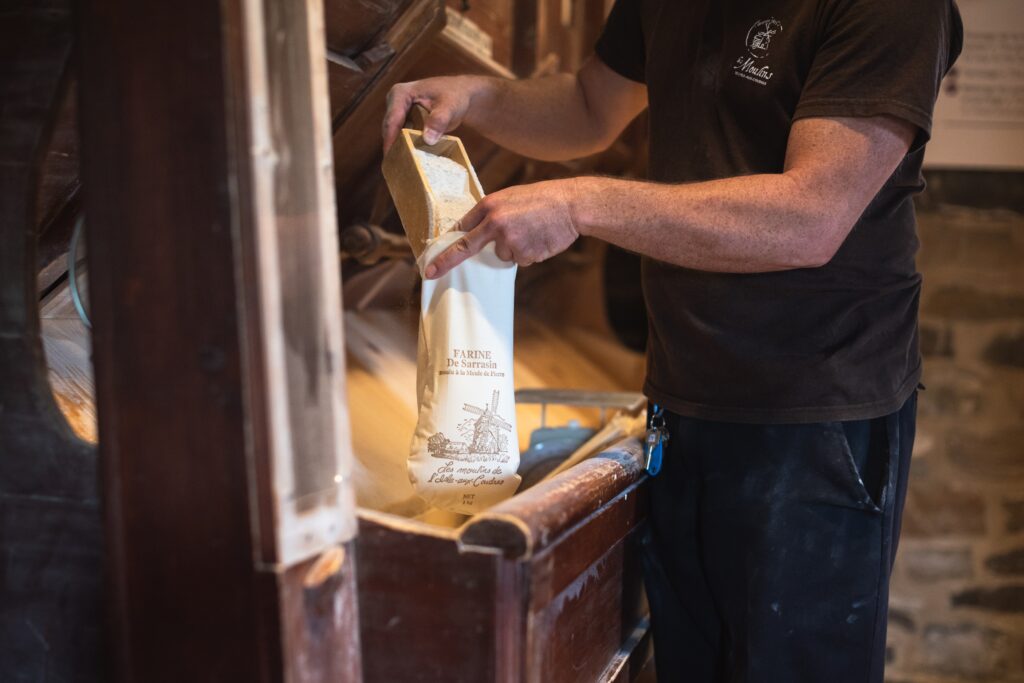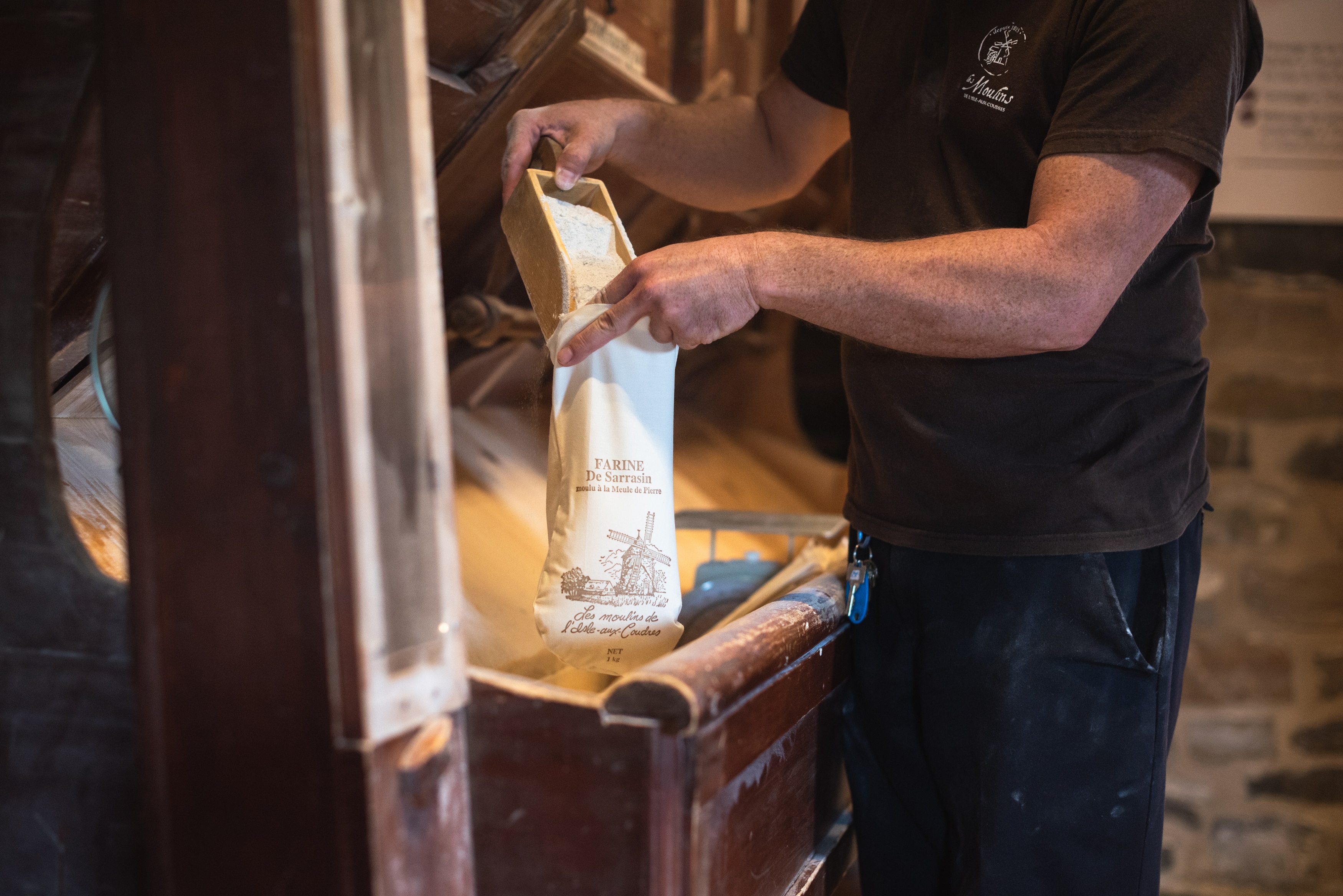Artisans at work and economusees: paying tribute to the bread tradition
Nouvelles du réseau
5 July 2021

Bread is part of our food culture. Whether it’s an aboriginal bannock, the bread of the first settlers, a Montreal bagel, a traditional North African pita, or the creations of new bakers, bread takes on many forms and textures throughout our history, and its flavours take us around the world. For many of us, it comforts and reassures. Just look at the craze for homemade bread last spring, and it’s a safe bet that bread lovers will soon find yeast, sourdough and local flours!
One might have thought that this domestic revival would be synonymous with a drop in the number of people visiting specialist shops. Clément Perron, owner of the Boulangerie Perron in Lac-Saint-Jean, has not lost any customers. On the contrary, as soon as the word “containment” was mentioned, his sales went up: “And it’s still going on at the same rate,” he says.
This bakery in Roberval -the ovens were started at the turn of the 20th century- has survived the concentration of the industry while the few other bakeries in the city closed their doors. It is a witness to all those workshops that used to perfume towns and villages. Clément Perron believes that selling exclusively on the spot probably sheltered him from the battle that was being waged on grocery shop shelves between local suppliers and the giants. Today, he is pleased to see that his clientele has diversified. He sells between 600 and 800 loaves of bread a day, and the day before this interview he had run out. In 2020, the bread ECONOMUSEE’s interpretation activities were interrupted due to the pandemic.
“The only thing we knew was that we didn’t know! In Charlevoix, Caroline Perron (no relation to Clément), director of the Moulins de L’Isle-aux-Coudres, ECONOMUSEE of milling, expresses the reality of the beginning of the spring lock-up: “For the miller to resume work, the water mill had to be put back on line. In order to get the mill working again after the winter, the dam had to be raised to get water. To raise the dam, we needed the authorisations! The team took up the challenge. And the two mills (water and wind) were able to continue to tell the story of subsistence, as well as the Coudriers’ quest for autonomy and food security. Caroline Perron insists: “When we opened the site in June, visitors were thirsty for discovery and we wanted to offer them an enjoyable experience. Only the guided activities have been cancelled due to the lack of safe access to the buildings.
This autumn, work on the dam is progressing, online sales are progressing: “From the start, we took the bull by the horns to ensure that the changes came from the heart of the organisation. We have learned to look at things differently, to correct things quickly. In this sense, there is something positive to be learned from our experience,” concludes Caroline Perron, who is determined to keep this heritage alive.
To find out more about the Artisans at work throughout the network, with a wealth of know-how that has endured and evolved over time, click here.
This project was funded by the Ministry of Agriculture, Fisheries and Food.

